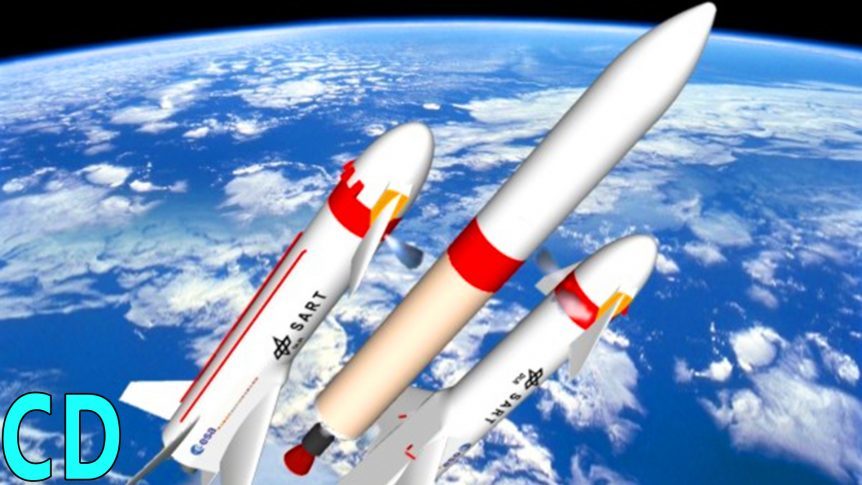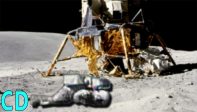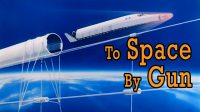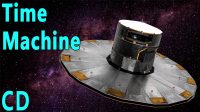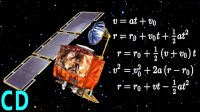One of the most impressive sights of recent years was the synchronised landing of the falcon heavy booster rockets, and although the centre core didn’t make it back simply because it didn’t have enough ignition fluid to restart all of the three of the centre cores engines the overall mission was a success.
But SpaceX wasn’t the first to use this technique and as we will see, there are several ways to get launch assets back to earth safely without just letting them burn up in the atmosphere.
The manoeuvre which spacex use is known as ‘fly-back’, and it requires the perfect co-ordination of nitrogen cold-gas thrusters, gimballed engine burns, and the constant adjustment of four ‘grid fins’ – heat-resistant control surfaces – to fine-tune the Falcon’s flight path.
The first stage of Falcon 9 weighs more than 14 tons with empty fuel tanks – but it can fly with the greatest precision, to land safely from the edge of space. Separating from the second stage at hypersonic velocities and at an altitude of more than 40 miles (70 kilometres), Falcon 9 navigates through unpredictable atmospheric weather conditions, to land at a precise spot on the Earth’s surface.
One other rocket can perform a similar feat: and that’s ‘New Shepard’, a sub-orbital booster built by Jeff Bezos’s Blue Origin. ‘New Shepard’ is decorated with the image of a giant feather, which according to Bezos is ‘a symbol of the perfection of flight’.
On November 23rd, 2015, New Shepard became the first rocket to fly to space and return to make a vertical landing. Less than a month later on December 21st, SpaceX’s Falcon 9 became the first booster to launch a payload to orbit, before returning to land vertically. The age of reusable rockets had begun: but why did it take so long to see it happen?
Landing a rocket presents some serious technical challenges, but the underlying reason for the delay has been the limited market for orbital launches. In the past, the launch industry was controlled by national and international Space Agencies. Even rich governments have often lacked the resources to fund innovation in space technology.
Repeated launch failures of a government-funded prototype would usually result in a project being cancelled: and this is exactly what happened to many of the 20th century’s most brilliant machines, that we frequently talk about on this channel.
Jeff Bezos and Elon Musk have invested their personal fortunes into reusable boosters, with the expectation that in reducing the cost of each launch, the market will grow.
SpaceX and Blue Origin are filling a niche that has been left open by the national space agencies. But reusable space vehicles were a priority for NASA since the 1970s. However, once the Space Shuttle was selected, America was stuck with the design for a generation: and their gliding orbiter turned out to be hugely expensive, and only grew more inefficient as it aged.
On the other side of the Iron Curtain, there was a similar story: ‘Buran’ became an all-consuming project that the USSR ultimately couldn’t afford.
But why did winged space-planes do such a poor job of being what they were supposed to be: a reusable and affordable launch system?
The inefficiency of the Shuttle design can be traced back to the decision to carry a large set of wings and engines into orbit. The American Space Shuttle weighed 68 tons and ‘Buran’ weighed 62 tons, and both could deliver a payload of less than 30 tons to Low Earth Orbit. This meant that any payload delivered by the Shuttle or Buran had to be lifted with a vehicle that tripled the total mass to orbit and that was without the booster rockets and or fuel tanks to get them there.
Ironically, the extra weight of crew quarters, wings and heat shielding also made the manned Shuttle a dangerous way to get to orbit. For every ton you accelerate up to orbital velocity, you then have to decelerate a ton of mass during re-entry, through friction with the atmosphere. This process generates heat, and a heavier vehicle, creates even more heat. The Shuttle and Buran dealt with this problem by being large and mostly hollow at the point of re-entry: increasing the surface area per ton for atmospheric braking.
But another set of space-planes reduced the aerodynamic pressures of re-entry by simply carrying less mass to orbit. Small space-planes have been in development since the X-20 ‘Dyna-Soar’, first outlined in 1960: and 21st century robotic orbital vehicles can do more with less mass. Without the need for crew quarters and life support, they can carry an even more economical payload fraction.
America has two high-profile robotic space-planes in development right now: the Boeing X-37, or Orbital Test Vehicle (OTV), and the Sierra Nevada Corporation ‘Dream Chaser’.
Both of these launch vertically, then re-enter the atmosphere and glide to a horizontal runway landing.
Not to be out-done, China is also working on a space-plane, called ‘Shenlong’ (or ‘Divine Dragon’). Shenlong is aerodynamically similar to the X-37, but has only appeared (so far) as a scaled-down version for a 2007 drop-test from a Chinese Air Force ‘H-6’ bomber.
But while small space-planes continue in slow development, reusable boosters have been studied for decades: sometimes adding a long-range ‘fly-back’ capability beyond anything possible with the Falcon 9 and New Shepard.
The second generation of the ‘Energia’ program, codenamed ‘Uragan’ (or ‘Hurricane’) was planned as a fully recoverable, Vertical-Takeoff, Horizontal-Landing (VTHL) system.
Like the original ‘Energia’ rocket, ‘Uragan’ would use strap-on boosters, powered by the four-chamber RD-170 engine. The RD-170 was ahead of its time: designed to ignite up to 10 times, and achieving up to 20 ‘relights’ in tests.
Soviet engineers realised that this re-light capability made the Energia boosters suitable for reusability over many launches. When ‘Uragan’s boosters separated from the main stage, they would unfold a set of wings to slow for re-entry, and then manoeuvre for a horizontal landing on a runway. The center core of the Uragan was also to be fitted with wings and was to be return to the earth by using the same technique as the antipodal bomber, a design first proposed by Eugen Saenger in 1943. This would have the centre core skip off the upper atmosphere around the globe until it returned back to its launch site where it would then land like the buran itself.
Although the antipodal design was not followed up, on the winged booster design was too good to abandon, and it reappeared after the fall of the Soviet Union, as a proposed reusable booster for the Angara launch system. The fly-back booster was called ‘Baikal’, and was essentially the same as the concept for ‘Uragan’: fitted with folding wings, and an air-breathing RD-33 jet engine to power atmospheric flight.
A similar system was also studied by the German Aerospace Center (DLR) from 1999, to replace the expendable solid boosters on the Ariane 5 launcher. Each Liquid-Fuelled Fly-Back Booster (LFBB) had forward canards, small rear wings and a turbofan engine, giving the booster all the aerodynamic capability of an aircraft.
The LFBB design progressed as far as scale models, before being cancelled, apparently because the hardware was becoming too large and complex to justify the economic saving.
But ESA has recently funded a new reusable first-stage booster designed at Airbus, to work with the upcoming Ariane 6 launcher. The Advanced Expendable Launcher with Innovative engine Economy, or ‘ADELINE’ uses an unusual set of aerodynamic features, to potentially achieve the most efficient and capable ‘fly-back’ ever.
Once the first stage fuel is expended, ADELINE separates and re-enters the atmosphere, protected by a heat shield in the nose. Once in the denser part of the atmosphere, the booster uses wings and a pair of propellers to manoeuvre to a horizontal landing on a runway. Propellers can achieve even better efficiencies than jet engines, meaning that even less fuel needs to be reserved for the fly-back.
Something which SpaceX is doing, is forcing the rest of the launch industry to re-examine their use of non-reusable launch systems. A few years ago the Russian space agency said they didn’t see any point in developing reusable rockets but after the recent success of spacex and there growing share of the market, ROSCOSMOS say that they are now actively looking at reusable rockets. So expect to see a lot more in the way of rockets and boosters flying back to base by themselves.
What do you think of SpaceX and Blue origins vision of a reusable future, let me know in the comments?
I would also like to thank all of our Patreons for their ongoing support, you can find out more about it on the link now showing and don’t forget to check out some of our other videos.
So just remains for me to say thanks for watching and please, subscribe thumbs up and share.

